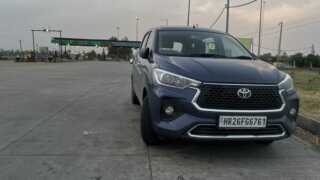Share via:
- The Supreme Court ruled that abrupt halts on highways without warning can be considered negligence, risking other vehicles. Highways are for high-speed travel, and drivers must alert others before stopping, even in emergencies, to ensure safety.
…Read More Image used for representational purposes only. Get Launch Updates on Notify me The Supreme Court has recently ruled that making abrupt halts on highways—especially without prior warning—can be deemed an act of negligence. This decision came while hearing a case involving a road accident, where the court observed that stopping suddenly on a highway could put other vehicles at serious risk, especially if it’s done without proper signals. The court noted that highways are designed for high-speed travel, and unexpected halts can endanger not just the driver but others on the road as well. Emphasising the potential consequences, the bench said that many of India’s highways lack shoulders or warning signs for upcoming speed breakers, making it even more crucial for drivers to remain alert and cautious. It further clarified that while there might be genuine reasons for a vehicle to stop suddenly, like an emergency or road obstruction, the driver must still make every effort to alert others behind them. The responsibility lies with the driver to ensure they don’t endanger fellow motorists by braking without giving adequate warning. A key takeaway from the court’s statement: “On highways, high speeds are normal. If a driver plans to stop, he must alert others—it is his responsibility.” The decision came in a case involving a young engineering student whose leg had to be amputated following a multi-vehicle crash in Tamil Nadu. A two-judge bench, led by Justices Suddhanshu Dhulia and Aravind Kumar, noted that national highways are designed for steady and swift travel, and any driver intending to pause must ensure trailing traffic is warned in time. The case stemmed from a 2017 incident in Coimbatore, where the student, S Mohammed Hakim, collided with a car that had come to a sudden stop. Thrown onto the tarmac, he was then struck by a bus approaching from behind. The car driver later explained that he stopped because his pregnant spouse felt unwell. Blame shared, but driver’s actions deemed primary triggerWhile the student was criticised for riding without a proper licence and not keeping enough space from the vehicle ahead, the judges agreed that the chain of events began with the car’s unannounced halt. The court concluded that the car driver was 50 per cent responsible for the accident. The bus operator was held 30 per cent liable, while Hakim was assigned 20 per cent of the fault for contributory negligence. Previous findings overturnedEarlier, the Motor Accident Claims Tribunal had cleared the car driver and attributed the fault mainly to the bus driver and Hakim. The Madras High Court later revised this view, placing a greater share of responsibility on the car driver. The Supreme Court’s latest judgment has further adjusted the distribution of blame, placing primary responsibility on the car driver. Get insights into Upcoming Cars In India, Electric Vehicles, Upcoming Bikes in India and cutting-edge technology transforming the automotive landscape. First Published Date: 31 Jul 2025, 13:02 pm IST
Source: hindustantimes.com






